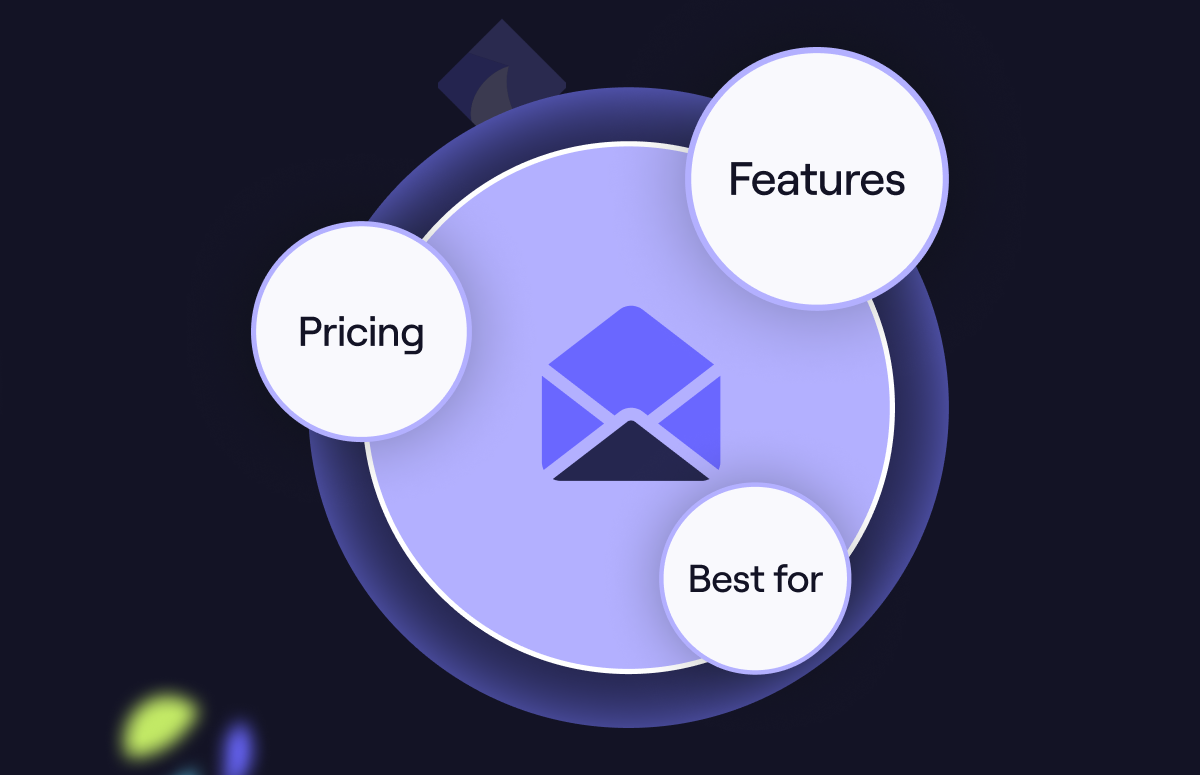Objection Handling for 2025: Steps, Tips and Script
Objection handling in sales means hearing more responses like:
“Yes.”
“I’m interested.”“Let’s book a meeting.”
Not...
“Now isn’t the right time.”
“I’ll have to speak to my boss.”
“Our budget won’t cover this.”
If you’re handling objections right, you’ll never have to endure that sinking feeling of knowing your sale is lost ever again!
In this article, you’ll learn:
- What is objection handling? And why it’s important.
- A five-point objection management framework.
- The four most common rejections and how to resolve them.
- Objection handling examples from real-life cold calls.
Scroll to get started 👇
What is objection handling?
Objection handling is when a salesperson addresses a prospect’s concerns about the product or service they are selling so the sale can move forward. It’s a natural part of the sales process and requires a sales rep to respond in a way that eases concerns and fills customer knowledge gaps. Common objections typically involve concerns about cost, suitability of the product, or competitors.
Why is objection handling in sales important?
Handling objections is important because it can determine whether a call succeeds or fails. If you don’t address potential customers’ objections, they’ll walk straight into the waiting arms of your competitors.
Press ▶️ to watch. Feargal McDonnell, Regional Sales Director at Salesforce, shares his take on objection handling:
Five-step objection handling framework
Objection handling can be complex.
You need to ensure you’re not being too pushy while staying tactful and responding appropriately, whether via a cold call, cold email template, or any other kind of outbound lead generation.
Customer objections can arise at any time, so it’s essential to have an objection handling process in place.
But whatever you do, don’t go off-script and wing it. You’ll only make things harder for yourself! Rather follow our five-point objection handling framework:
Step 1: Listen to the prospect
Ever heard of the 70/30 rule?
It’s the number one rule of communication when it comes to making sales calls. The rule states that a prospect lead should do 70% of the talking and the rep only 30%.
Of course, getting a prospective buyer to open up and do all that talking is a challenge, but there’s one major benefit of doing this:
The more the prospect feels like they’re being heard and understood, the more likely they are to buy. So, by simply listening to their objections, you’re taking the first step in turning a prospect into a lead.
This is why step one in our five-step objection handling process is to stop talking and listen to your prospects’ objections.
The more you listen, the more you’ll learn - and the knowledge you’ll gain will help you out massively when it’s your turn to respond.
Step 2: Ask open-ended questions
When it comes to handling sales objections, always, always ask open-ended questions.
Active listening is wonderful, but prospects want to know you understand their challenges.
To do this, you’ll need to ask qualifying questions and build rapport with your potential buyer.
But what are open-ended questions?
Open-ended questions are any type of question that doesn’t require a yes or no answer.
A few examples to use when objection handling are:
- What’s the biggest challenge your team/company is currently facing?
- What takes up the most time in your day?
- What does your manager care most about?
- What’s prevented you from solving this problem in the past?
- How do you think a new product would solve your problem?
- What’s your timeline for getting this problem fixed?
If you stick to this format of questioning, your prospect will feel you’re interested in what they have to say, and they’ll feel encouraged to open up and start revealing more.
Step 3: Solve the objection
By the time you reach step three, you’ll have gained more understanding regarding why your prospect was objecting to your sales pitch. Now it’s time to provide solutions!
To handle each objection, you’ll need to think fast.
Stay calm, remember what techniques worked in the past and answer their most urgent objection first.
Once you’ve resolved their most pressing concern, you’ll be able to respond to any follow-up objections with ease.
What’s more, this technique will build trust with your prospect, leading to a better relationship in the future.
Step 4: Confirm the solution
Now that you’ve resolved your prospects’ objections, you’ll need to ensure that the solution you’ve offered them matches their requirements.
Ask them:
“Are you happy with my solution?”
If they reply with yes, then congrats! You can continue with your cold call.
However, if they respond with no, you’ll have to backtrack by asking more open-ended questions to make sure you understand their objection or to offer an alternative solution.
Step 5: Move on
Once your prospect is satisfied with your solution you can move on to the next stage of your sale. This can either be closing or facing another objection type.
Don’t spend too much time focusing on objections. Listen to them, ask questions, define the problem and provide a solution. But, whatever you do, never go back to an objection once you’ve addressed it!
Looking for more objection handling tips? Press ▶️ to watch this informative video:
Four common objection handling examples and how to respond
We asked Morgan J Ingram, the Director of Sales Execution and Evolution at Jbarrows Sales Training which objections he came across in sales calls the most.
Here’s a list of his top objection handling examples:
1. “I don’t have the time.”
Morgan says:
“When someone says this, most likely, it's not true. There are instances where it could be true, but it's probably not true because why would you pick up the phone if you don’t have the time?”
He recommends you handle this time-related objection with a response similar to this one:
“Yeah, I completely understand that you're busy right now. However, all I'm asking for is 30 seconds of your time. And in that 30 seconds, I'll explain to you what we do over here. And if that's relevant, we could put time on the calendar to call you when you're prepared for it. Or if not, you can hang up on me.” Pause. “Does that sound fair?”
Most prospects don’t want to come across as being unfair, so they’ll respond by saying, yes it’s fair, continue.
Now, if you can get your value proposition done within thirty seconds then you shouldn’t have a problem booking a meeting or facing any further objections!
2. “I’m not interested.”
Morgan says:
“There are multiple different ways that a product can serve somebody. So what you need to do is figure out, okay, he or she is not interested in that. But there are other things that they probably could be interested in that I offer. All you have to do is find out what they’re interested in and then insert a new value prop based on that.”
This is one of the most common sales objections. Here’s an example of how you can handle it:
“This sounds like it might not be a priority right now. But typically, when I talk to Sales Directors, they’re struggling with these 3 things, (X, Y and Z). Is that currently on your radar or am I just completely missing the mark here?”
3. “Is this a sales call?”
The objection handling template for this one is:
“Hey, you know, this actually is not a sales call. The reason for this call is to see if you're interested in getting on a sales call.”
“I know I'm calling out of the blue and you're probably not comfortable with taking cold calls at all. I completely understand that. All I'm asking for here is 30 seconds of your time.”
“Nothing too crazy, just to quickly explain what I think might be able to help you and your organisation based on my research. And if that's not interesting to you, it's okay to tell me ‘no’ and we’ll part ways.”
“Does that sound fair?”
4. “I’m using a similar product.”
Whatever you do, don’t badmouth your competitors!
You never know if it will get back to them, and you also don’t want to come across as negative to a potential lead. What’s more, the prospect might really like your competitor's product, and you’ll only succeed in offending them.
Instead, try asking them how they’d rate that solution on a scale of one to ten.
If they reply with eight or nine, ask them what would make it a ten.
The reasoning behind this objection handling technique is that you’re getting your prospect to reveal any pains they have with that solution. Pains you can swoop in and fix.
You can also try:
“Out of curiosity, are you married to that solution?”
Prospect: “No.”
“Why is that?”
“What would you improve about it?”
Morgan explains why this form of objection management works:
“Handle sales objections by asking questions like these can change a conversation. Now you’re digging deeper into the prospect’s current vendor, their likes and dislikes about it.”
“The ‘what would you improve’ question is a good one to ask because nothing is perfect. There’s always something we would like to change about the tools we use. And it’s better than asking ‘what sucks about it?’ because it’s positive. You’re not getting into an argument, you’re just a curious person.”
Press ▶️ to listen to Morgan respond to live cold calling objections in this episode of Cognism’s sales podcast, Revenue Champions.
Example of an objection handling script
Even pro sales leaders had to start somewhere, and for a lot of sales reps, their objection handling training started with a script.
To help you achieve B2B selling success, we’re sharing our top objection handling script for pricing objections:
Rep: Hey [name], Miles from Cognism here. How are you?
Prospect: Hi Miles, I’m well thanks and you?
Rep: Great thanks! I appreciate you taking my call. Is now a bad time?
Prospect: I’ve got a minute, what is this about?
Rep: I just wanted to give you a quick call as we’re currently doing lots of work with [tech/software company of a similar size], as well as a variety of other SaaS companies like you guys. We help our clients by giving them a tool which they can use in-house to generate direct contact information for key decision-makers within their target markets.
Prospect: Yes, Cognism. I’ve heard of you. We like your solution but we don’t have the budget for software right now.
Rep: Pause.
Prospect: We need to expand our team first, you know.
Rep: I understand. I hear this from a lot of businesses. You feel you can bring in more revenue if you grow your team first.
Prospect: Yeah, we need to keep that budget open for new reps.
Rep: I see. Usually, budget concerns are different for every company. Could I ask you what the main factor is that’s driving you to hire more rather than invest in a solution that could help increase ROI?
Prospect: The current team isn’t bringing in enough revenue.
Rep: Thank you for sharing this with me and being so upfront, (name). From what we’ve discussed, it sounds like your current reps aren’t meeting target and you’re hoping more new hires will increase your output and bring in more revenue. Did I get that right?
Prospect: Yes.
Rep: Okay. I see how that would give you pause. I’ve had customers voice this same concern before and when they realised our software could increase incoming leads and save their reps 63% of time, they were up for giving it a try.
Prospect: How do you save them that much time?
Rep: A range of factors. To start we have intent data which helps you connect with contacts who are ready to buy leading to a win rate upwards of 74%. Then there’s our quality GDPR data and diamond Verified phone data® which ensures reps are always calling the right person with 80% less calls needed to show results. Does this make sense and does it settle your concern regarding the expansion of your team?
Prospect: Yeah it does.
Rep: Great. If you have any other concerns please let me know. Otherwise, let’s schedule a demo and I can show you how the platform works in action, and we can discuss a pricing option that works for your team as they are right now.
Prospect: Okay sure. Can you email me a calendar invite?
End
💡 P.S. Be sure to get responses, even when leaving a voicemail, with our best cold calling voicemail scripts.
The great thing about this script is you can modify it to fit any type of objection. All it takes is flexing your objection handling skills on a daily basis until responding to them comes as naturally as breathing.
For more objection handling secrets, watch this rundown of our ultimate B2B cold calling script with Ryan Reisert 👇.
Objection Handling FAQ
Are objections a sign that the prospect isn’t interested?
Absolutely not! They’re an indicator that the prospect is interested, but doesn’t yet have a full understanding of your product or service. It’s your job as a sales rep to give them that understanding.
You do this by objection handling.
Aren’t most sales objections false?
No - most objections are entirely valid. You can’t just brush them off. You have to provide insight and give the prospect a compelling reason to choose your product/service over others.
How quickly should you address objections on a cold call?
The simple answer is: as quickly as you can!
The longer you don’t handle objections, the stronger the prospect’s concerns will become - and the harder it will be for you to change their mind.
What if you can’t solve an objection?
If the prospect asks you something that you genuinely feel you can’t answer - don’t wing it!
Here’s the objection handling technique or method for this situation:
Tell the prospect you’ll have to refer their question upwards - and always, always agree on a timeframe for you to supply a response.
Say hello to more conversions with Cognism
Turn “no” into “yes” and say goodbye to hours spent handling objections in sales.
Cognism is a sales intelligence solution with the highest quality B2B data on the market.
You can get access to:
- Quality GDPR-compliant data.
- More targeted leads with verified business telephone numbers and direct dial data for the USA.
- Easy integration with your company CRM.
Find out more! Click 👇 to book your demo.



